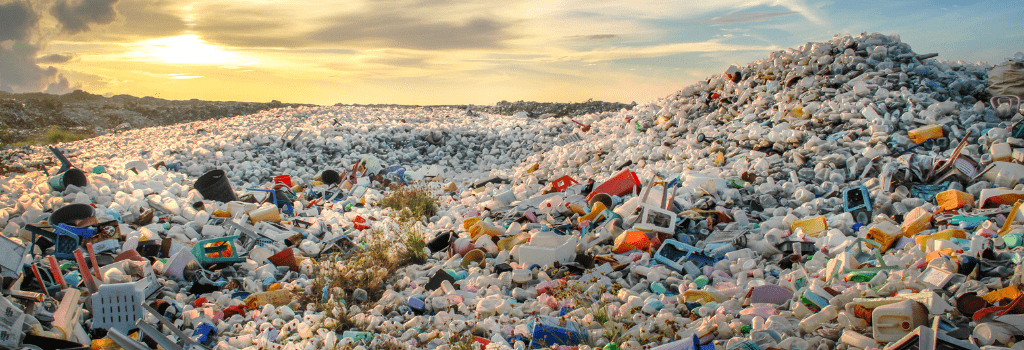
Plastic islands or, more frequently, garbage patches pose a serious threat to the environment and human health. In this article, you will find out what plastic islands are and what possibilities exist to reverse the current situation.
The amount of plastic we use for packaging, transporting or storing food has been rapidly increasing in the last few years. We unnecessarily wrap, pack, bottle and bag, always for the sake of comfort. The big problem is that we usually make use of single-use plastic.
According to a 2019 report by WWF, in only four years, from 2000 to 2016, we produced half as much plastic as between 1950 and 2000. And the rate keeps growing. We know that plastic may take up to 1000 years to disintegrate and that reducing and recycling is the solution to this issue. Yet, the seas have become a dumping ground for plastic.
A UN report estimates that about 8 million metric tonnes of plastic end up in the ocean each year. This is equivalent to sinking a plastic truckload every minute in the seas. Marine currents accumulate this debris especially in five places in the ocean, making up large garbage patches known as plastic islands. The first of these plastic islands was found in 1997 and we currently know of 6 more.
The existence of these garbage patches increasingly worries society and scientists: the sole fact that they exist is a sad comment on how we manage the waste we produce.
Plastic islands represent a serious environmental issue: they mainly affect marine life, but they also affect us. From the slow degradation of plastic comes microplastic, tiny particles that may end up eaten by fish and other animals. As a consequence, microplastics accumulate in the tissues of organisms we eat. Some studies estimate that we consume 5 g of microplastics every week: the equivalent of eating a credit card weekly.
Most of the plastic products in the ocean come from activities such as fishing, sailing and tourism. However, we should not forget land-based sources of plastic such as industry, agriculture, livestock farming and poor waste management.

POSSIBLE SOLUTIONS TO PLASTIC ISLANDS
Clearly, waste management policies are a part of the solution. On the one hand, governments can implement laws and other tools to regulate waste management, ban the use of single-use plastics, fund new research, etc. On the other hand, private companies and individuals must become aware of the impact of the decisions we make and how to promote plastic reduction at home, at work and at the industrial level.
To reverse the situation, organisations and citizens organise beach and coastal water sweeps and cleaning, but pitifully their efforts do not suffice: the sea is already full of plastic. To make changes we need to work from different perspectives: promoting recycling, improving waste management, supporting research and technological innovation, etc.
Fortunately, solidary and private actions are already underway oriented to reduce the amount of plastic in the seas, recycle it, transform it and make the most of it. For example, some professional associations encourage the collection of plastic when they go fishing and afterwards, they give it to companies or other organisations to make clothes, sneakers or school materials. This is the case with initiatives such as Vertidos Cero, EcoMar, Limpocean, 4Ocean and Gravity Wave.
SCIENCE, AN ALLY IN WASTE REDUCTION
There are also innovative initiatives that try to get to the root causes of the problem, such as tracking the amount of plastic already in the oceans. This kind of action can help identify the sources of plastic waste, analyze the causes and develop strategies for reducing it.
One such innovative research line revolves around the discovery of Ideonella sakaiensis, a bacterium capable of transforming PET into an easily degradable material. Thanks to this bacterium several enzymes that can digest plastic have been created. These advances suggest that besides using plastic bottles to make compost for the fields we could clean the oceans of plastic.
WASTE MANAGEMENT: THE RESPONSE TO THE PROBLEM
Plastic islands are an example of the need to act quickly. Recycling is important, but we need to reduce the amount of plastic produced and thrown away as waste as much as possible and, at the same time, promote the use of recyclable and biodegradable materials.
We need effective measures to reduce the amount of waste we throw into the sea, and those measures must be put into practice by individuals and organisations, companies and governments. It is essential to keep in mind that everybody can contribute a small part to lowering the human ecological footprint.
A way to begin is to avoid using single-use plastics and reduce the amount of plastic used at home or work as much as possible. We can also create and participate in initiatives to clean the seas, encourage policies for reducing, reusing and recycling waste, vote for the parties proposing laws and institutions oriented to reducing plastic and protecting the oceans, etc. We have much to do! Let us take action!

WHAT CAN YOU DO TO REDUCE PLASTIC AND MINIMISE YOUR ECOLOGICAL FOOTPRINT?
> 15 educational activities for reducing plastic use (in Catalan)
- Use reusable bags.
- Drink from refillable glass bottles, not from single-use plastic bottles.
- Avoid buying food and drinks with plastic packaging; choose those with alternative packaging, such as paper, glass or metal.
- Purchase products in bulk as a means to avoid individual packets.
- Use glass or metal lunch boxes.
- Avoid products with microplastics, for example, some face and body scrubs.

If you wish to learn more about this and other aspects of healthy and sustainable eating, come visit the MENJA, ACTUA, IMPACTA [EAT, ACT, IMPACT] exhibition in El Prat de Llobregat.
And remember, when you take care of yourself, you take care of the planet!

